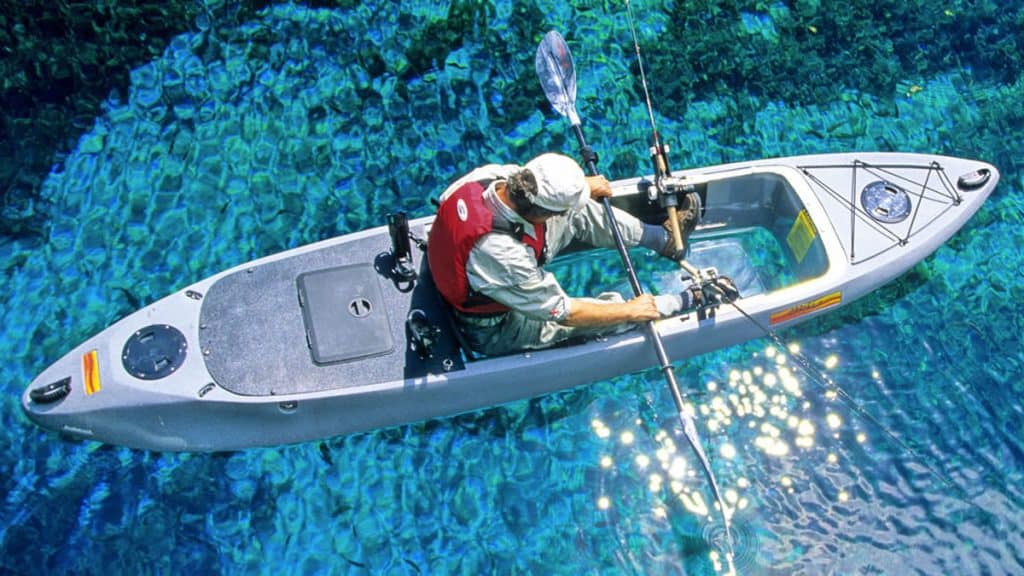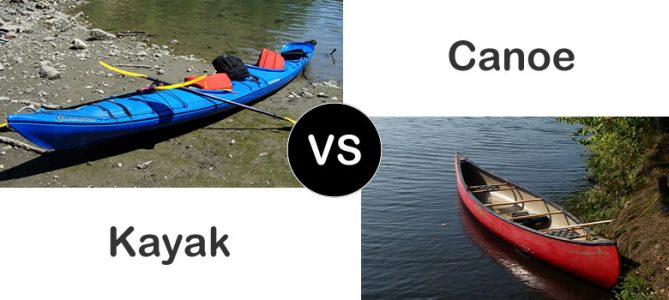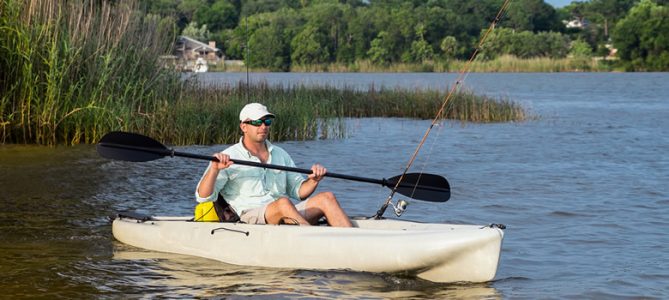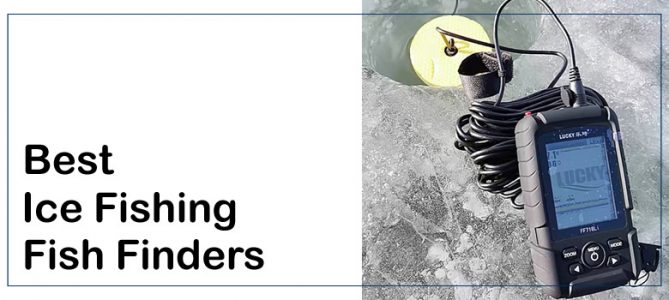If you buy via a link on this page, we may receive a commission, at no extra cost to you.Learn more
Kayak fishing popularity has grown in recent years. But this is not a surprise at all. Fishing is fun on its own, and many people enjoy paddling on a kayak. Thus, kayak fishing is merely a combination of two great hobbies. However, not everything is fun and games.
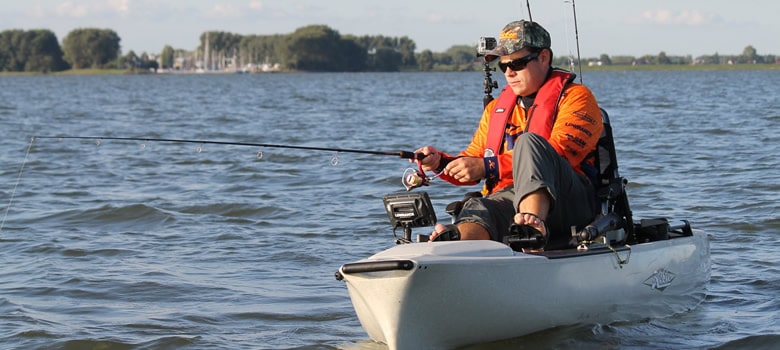
With the rising popularity of kayak, there has also been an increase in the number of accidents related to this activity. So, many people have asked, is kayak fishing dangerous? And the short answer is that it is. But it doesn’t have to be. By taking the necessary precautions, you will minimize the risk. Thus, decreasing the chances of being involved in an accident. You may be asking yourself, how do I lessen the risks?
- Learn how to swim properly- No need to explain this one
- Capsizing- Learn how to avoid them and how to act upon them
- Mind your surroundings- Read the tides, winds, weather, and never let your guard down
- Know your limits- There is no reason to push yourself in the wild
- Team up- If possible, never go on your own
- Pack start- Rod, line, hook, PFD, first kit, knife, compass, radio, and whistle
- Practice- Learn how to paddle, flip the kayak, and cast
- Inspect your gear- Check for holes or cracks in the hull or paddle
We are not trying to spook you with this. We love kayak fishing, and we do encourage you to practice it. However, we also promote safe kayaking. Thus, we will take the following lines to talk about safe kayak fishing and provide newbies with some useful tips.
The personal flotation device: The number one rule
Even if you know how to swim, we strongly suggest using a personal flotation device. In some waters, the law compels you to wear one. Be a law-abiding citizen and use one.
Furthermore, most fishing PFDs have a lot of cool features that could be helpful while fishing, such as tool holders, knife sheath, and pockets to keep little things on you.
Capsizing: Learn to get back on your kayak
Kayaks are quite stable crafts. Still, this doesn’t mean that it won’t flip over. There are a couple of things that you can do to avoid it, of course. But it will still happen at some point. Thus, learning how to prevent and how to reverse a capsize are both equally important. In this particular section, we will talk about how to act upon a capsize.
There are several ways to flip a kayak over. For example, if you have a sit-inside fishing kayak, you can get inside it. Yes, you sit inside the kayak while it is upside down. Then, place the paddle alongside you. Next, push the paddle downwards while rolling with all your body in the opposite direction.
Alternatively, if you have a sit-on-top fishing kayak, you can place your body above the hull. Then, grab one of the handles and pull the craft. You can also flip it over by pushing up from one side.
As you can see, it is quite simple. But the problem is not learning the technique. The problem is applying it in under stressful situations. After mastering the art of flipping the kayak, you must learn how to get on the kayak from the water.
Getting back inside
Many inexperienced anglers try to get inside the kayak like if they were getting out of a pool. And in kayaks, weight distribution is key. Thus, if you place too much weight in one section, it will capsize again. It could even hit you in the face in the process.
The first thing that you should do before attempting to re-enter your kayak is to make sure that all your gear is in place. Then, grab one of the sides and horizontally align your body with the edge of the craft. Now push with your legs, as if you were swimming, and pull the kayak towards you. Once your belly is on it, roll your hips, and that’s all.
Mind Your Surroundings
Fishing requires paying attention to every single movement. Sadly, this means that you will naturally disconnect from what’s happening near you. So, since you are extremely vulnerable once you are in the water, it won’t hurt you to take a look around from time to time. But, of what I should be aware of?
Weather
The weather affects all kinds of vessels. Sure, kayaking on a sunny day with little to no wind is fairly easy. But doing it under heavy rain or windy days is a different thing. The rain will get inside the kayak, and the wind will increase waves, making everything harder. Thus, increasing the risks. In this situation, we recommend staying outside the waters.
Sunny days have their risks. For example, dehydration and sunburns are quite common among first-timers. Wearing the sunglasses, breathable clothes, and applying sunscreen will do the trick here.
Dangerous creatures
Paddling inside a body of water means getting inside the territory of other life forms. Many of which don’t represent a treat to you. But others, such as sharks, gators, snakes, and stingrays are.
Sharks usually won’t attack you if you stay inside the kayak. Keep calm at all times, and wait for it to go away. Most times, sharks are there for your fish. Don’t try to hit them with the paddle, or you will enrage it.
The same applies to gators. But it is preferable to avoid encountering them in the wild. Thus, keep clear of river shores with too much vegetation.
Snakes are not a common problem for kayak anglers. However, a vigorous strike to the water will be enough to scare any incoming snake.
Stingrays aren’t a threat unless you happen to hook one. If this ever happens, don’t try to get it inside the kayak. Paddle to the nearest shore, once there, try to flip it and use a long set of pliers to remove the hook. Remember to keep as far away from the tail as possible. But if you don’t have the necessary tools, we suggest cutting the line and let the stingray go.
Other boats
If you are going kayak fishing, you will likely encounter other anglers. Some of them will be fishing from a kayak, while others will be fishing from a bigger boat. In any case, try your best to keep clear of them. It is the best way to avoid tangled lines.
Furthermore, if the other angler has a bigger boat, it is quite likely that it will create ripples that can capsize your kayak.
Learn to read the waters
You pay attention to the road while you are driving, right? Thus, it makes sense to do the same while kayaking to your fishing spot, or while sitting still waiting for a bite.
If you don’t pay attention to the changing tide, you might end up drifting away from your initial spot. You could be in serious trouble if you don’t know the waters well. An anchor will solve this problem. But you can also use a compass or use landmarks to find your way back.
Rapids and underwater obstacles are major problems when kayak fishing. It should be needless to say, but keep clear of whitewater. Besides, it is quite unlikely that you will manage to catch any fish inside a rapid. So, there is no reason to get inside one.
Rocks, debris, and other underwater structures can damage the hull of your kayak. Hitting one can even throw you off the kayak. So, try your best to avoid them.
Fishing at sea is inherently more dangerous than freshwater kayak fishing. There are usually more waves, and the current is stronger. The easiest way to cope with the waves is by directing the bow towards the waves. This way, you will cut through it. But if you don’t have the time to turn the boat, merely lean your body towards the wave. It will counterbalance the hit, and, hopefully, keep you floating.
Know your limits
Is this your first kayak fishing experience? If so, keep it simple. Go to the local lake, fish near the shore, and don’t paddle for too long. Remember that kayaking is an intense workout. Fishing will draw some energy too. Thus, make sure that you have enough fuel for the voyage back.
It looks a little stupid. But many people push themselves too far, to the point that they no longer can paddle their way back. People usually panic when this happens. And you don’t think straight when this happens. So, better follow our advice.
This also applies to a big fish at the end of your line. We all want to land that massive, award-winning fish. But the reality is that, in kayak fishing, you have less space to maneuver, even more so if you are new to it. In this case, the fish will have the upper hand. Thus, it is better to let the fish go than expose yourself.
Kayak fishing is more than rods, lines, and hooks
A knife, compass, map, GPS, whistle, radio, first aid kit are some of the things that you should keep on your kayak at all times. It won’t prevent an accident. But each piece of equipment will help you if the need arises. For example, a compass and a map are your best buddies while you are fishing in unknown waters. Learning how to use them could save you some trouble if you ever get lost on your kayak. But you can alternatively use a GPS. However, we do recommend learning how to use a map and a compass. You’ll not regret it.
The whistle and radio are essential. They will help you to signal someone if you ever find yourself in a delicate situation.
Pack Smart
Is that necessary to bring 7 rods with you? NO. Keep in mind that you are fishing in a confined space, with little room to move around. Thus, you must make the most out of the space you have. Plus, having more room to move and maneuver means fewer accidents.
Another useful advice is to distribute the weight as evenly as possible along with the kayak. It will decrease the risk of capsizing, and it will be easier to maneuver it. Remember to secure them as tight as possible.
Bring food and snacks
Kayak fishing is exhausting. You burn a lot of calories and sweat as much. So, it makes perfect sense to replenish your body with some water and food. Keep a cooler with some bottles of water, protein bars, and fruits at hand on your trips.
Many anglers like to drink beer while fishing. There is nothing wrong with this, as long as you don’t drink yourself to oblivion.
The practice makes the master
Fishing takes years to master, and kayak fishing takes even more time. So, make sure to practice how to paddle, get in and out of the kayak, flip the craft, and how to cast. Start your training in a lake or river with slow-moving waters.
By practicing, you will decrease the odds of an accident happening. For example, many anglers capsize the kayak while trying to cast. Others get themselves hooked while trying to land the fish inside the kayak. Training and knowing your gear is the first line of defense.
Check your gear
All fishing kayaks wear out in time. Thus, constantly check the integrity of the craft before your trip. Patch any hole and make sure that the drainage system is working.
Some kayaks have watertight hatches, make sure to inspect those as well.
You are good to go!
Kayak fishing is not as dangerous as other activities. However, it has its hazards. There are several things that you can do to minimize them, thereby making your fishing trip a lot much safer.
For instance, you should wear a suitable personal flotation device at all times. Additionally, we recommend starting fishing on calm waters such as lakes. You shouldn’t fish in other places until you know how to flip a kayak over, and how to cast, remove hooks, and manage the rod from inside the kayak.
And remember, weight distribution is key in kayak fishing. Thus, bring only the necessary tackle and make sure to tie down everything. Also, keep your first aid kit at hand at all times, and don’t forget the snacks!
It also pays to keep an eye out for possible dangerous situations such as an incoming boat, a change in the tide, waves, or animals.

